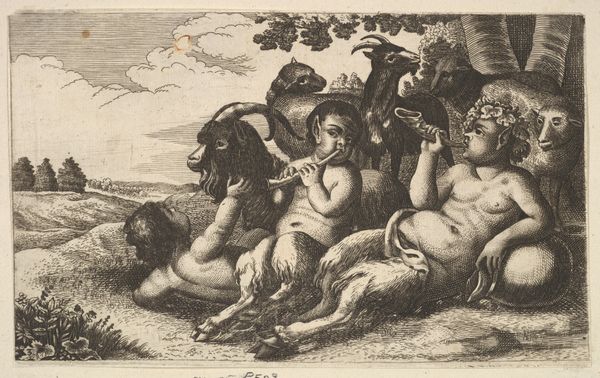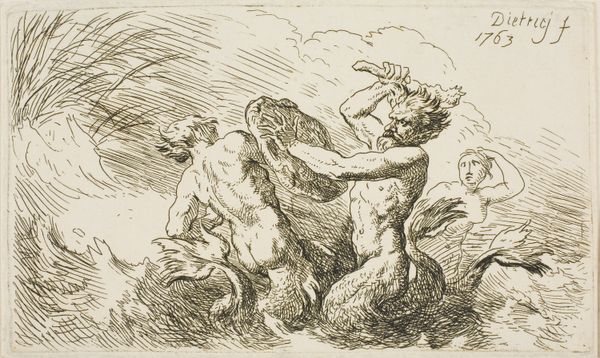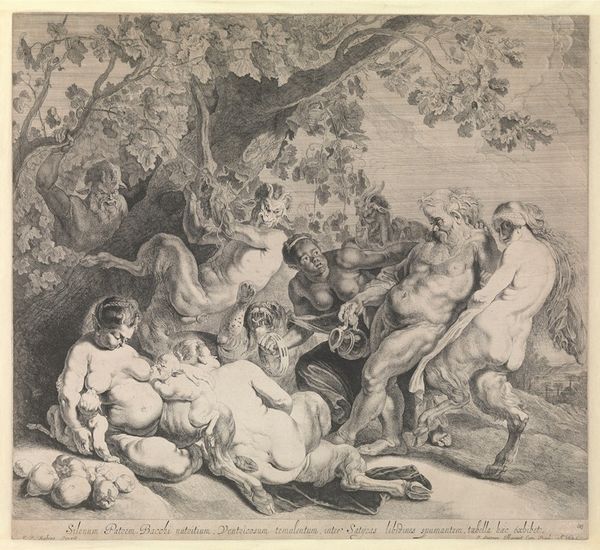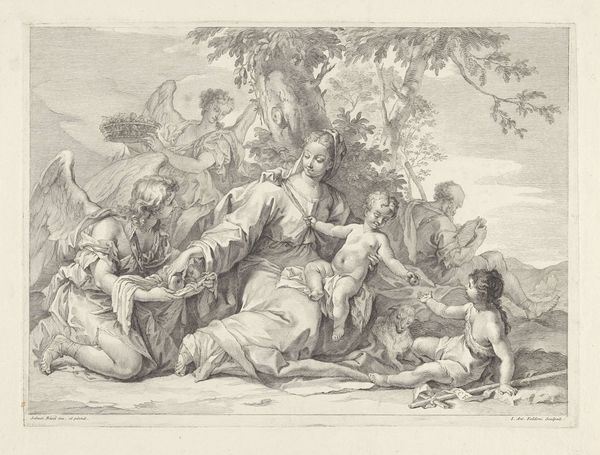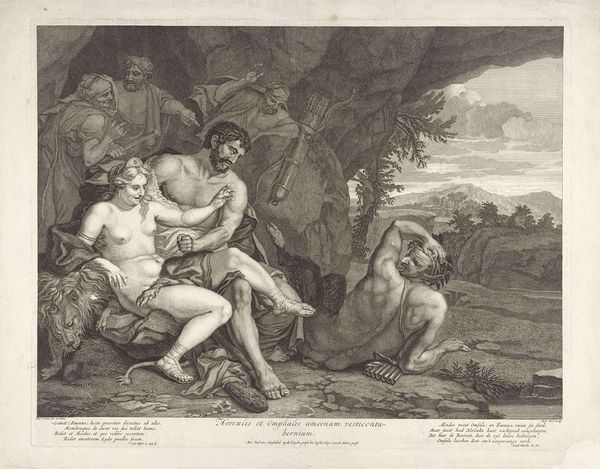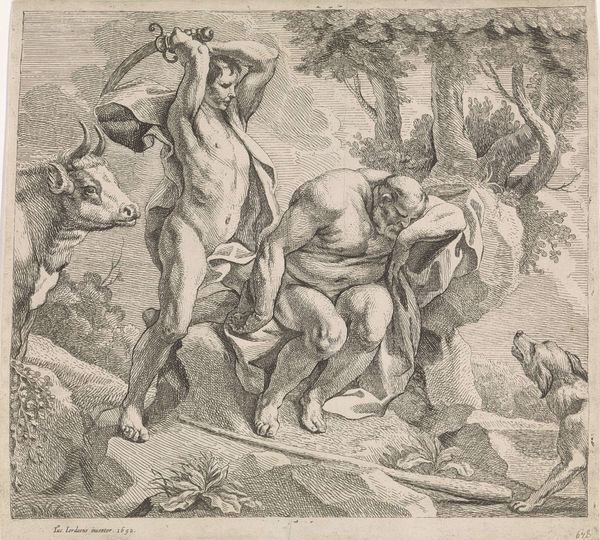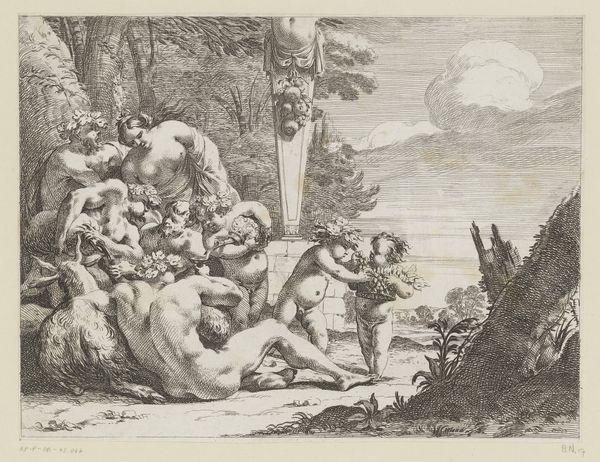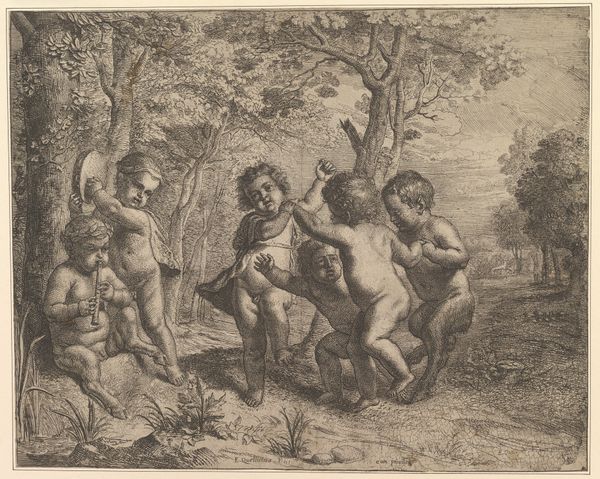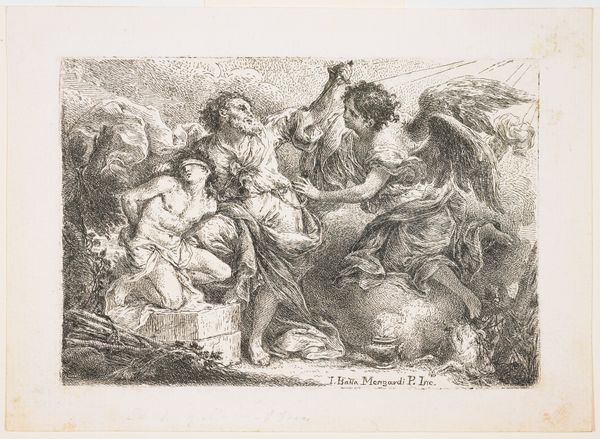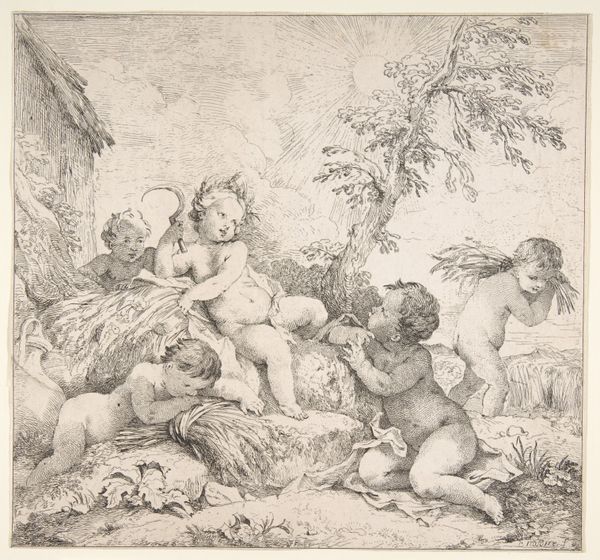
Les petits moissonneurs et la chevre (The Young Harvesters and the Goat), in an album containing Recueil de Compositions par Lagrenée Le Jeune (Collection of Compositions by Lagrenée the Younger) 1782
0:00
0:00
Dimensions: Sheet: 15 13/16 × 21 9/16 in. (40.2 × 54.7 cm) Plate: 8 7/16 × 11 5/16 in. (21.5 × 28.8 cm)
Copyright: Public Domain
Editor: Here we have "Les petits moissonneurs et la chevre (The Young Harvesters and the Goat)" by Jean Jacques Lagrenée, created in 1782. It’s an etching, so a print made from an engraved plate. It depicts these little children, almost cherubic figures, interacting with a goat. It has a playful, almost frivolous mood. What do you see in this piece, from your perspective? Curator: This print provides a window into the late 18th-century aristocratic fascination with pastoral life, though seen through a highly idealized lens. Note how Lagrenée presents these children – are they truly 'harvesters' as the title suggests, or are they symbolic figures placed in a contrived rural setting? Editor: They do seem a bit too clean to be actual working children. It’s more like they are playing dress-up. Curator: Exactly! Consider the social context: this image emerges during a period of increasing social and economic disparity in France, with the aristocracy often romanticizing peasant life. Images like these could have functioned as a way to distract from the stark realities of the time, portraying a harmony that didn't necessarily exist. Who do you think was consuming imagery like this? Editor: Probably wealthy people who wanted a nice scene, removed from real issues. Maybe a sign of what was to come with the Revolution? Curator: It could be read as such. The image becomes particularly potent when viewed in light of the political and social unrest brewing at the time. Does the visual rhetoric of innocence and idyllic bliss heighten the sense of irony for a contemporary viewer, or do you think that would have been the case at the time, as well? Editor: Thinking about the piece as a symbol of a brewing conflict definitely makes me consider art's place in social and political history differently. Thanks for your perspective! Curator: It is also thanks to images like this that allow us to have this dialogue. It makes us reflect not only on the artwork, but the historical context.
Comments
No comments
Be the first to comment and join the conversation on the ultimate creative platform.
